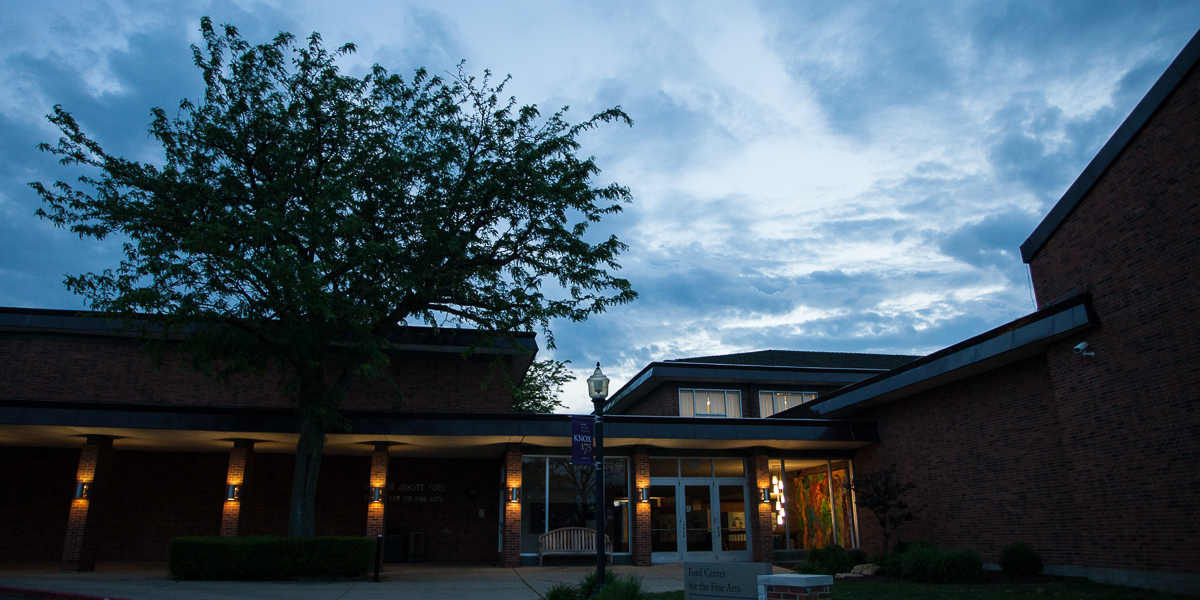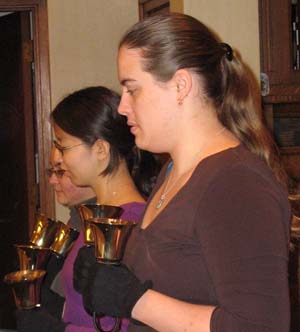

Venture Boldly

Office of Communications
2 East South Street
Galesburg, IL 61401

 Some think of a music appreciation class as a mind-numbing lecture on general music analysis, historical context, composition and performance.
Some think of a music appreciation class as a mind-numbing lecture on general music analysis, historical context, composition and performance.
But students in Professor Sarah Day-O'Connell's Introduction to World Music 130 class are marching to the beat of a different drummer and understanding a wide range of music styles and genres, and appreciating where the music comes from, the social context of where it has been performed and listened to. "The purpose of the class is to expand to new ways of listening to music the students are already familiar with. I introduce the class to a smattering of music concepts from around the world that expand their idea of rhythm, structure and pitch," Day-O'Connell says.
From the steel band and calypso of Trinidad to the cultural questions of national, gender or class identification, students are not just an audience. The rhythm of the class includes a required field work project. "The project teaches some things that cannot be taught in the classroom," Day-O'Connell says. "It provides a broadening of their understanding of what music is. Music is an activity, not just sheet music. It is not just a noun. We use it as a verb."
Tuning In
Have you ever heard a piece of music and wanted to know more? How is it constructed? Which instruments are playing? How it relates to the society in which it was created?
Nevena Kirova '08 admits that at the beginning of the class she had almost no musical background. "I had no idea what the class would be like, but it turned out to be fun and at the same time I learned a lot about music as a connection to culture and tradition in some countries," she says. As a Bulgarian, Kirova researched Bulgarian folk music versus Bulgarian pop folk music [Chalga]. "By working on this project, I actually realized a lot about the culture and lifestyle of Bulgarians that I never thought about before," she says.
Projects ranged from a first-year student working with John Heasley, producer of the Songbag Concert Series, who is involved in preserving the traditional blues, to senior Kim Kreiling's research of her family through three generations of musicians including her grandfather who performed with Frank Sinatra.
Glenna Thompson '07 joined a bell choir. As the only music major in her class, Thompson says that while most people who take the class assume they will hear a lot of jazz and blues, "I wanted to be a part of a musical group and thought why not the bell choir. In addition to trying something new, I wanted a spiritual connection." Thompson says. Along with her recent training with the bell choir, Thompson plays the oboe, flute and most recently the piano. She also chimes in with a major in French.
"I selected Knox because I wanted a quality liberal arts school in the Midwest. I enjoy the music department?Knox's music department is getting a lot more attention," she says. "This experience, along with my Knox experience, has helped me figure out who I am."
So, how do you listen to music?
Through an exciting and diverse array of musical examples, World Music 130 introduces students to new way of listening to music. "This course explores the interface of music and social movements and examines how the emergent global society is bringing musical forms together in new ways from all around the world," Day-O'Connell says. "One of the most satisfying results of the fieldwork projects is seeing the students' start to listen to their 'own' familiar musics with new ears; they also are exposed to musics they never would have heard otherwise."
Published on May 30, 2007